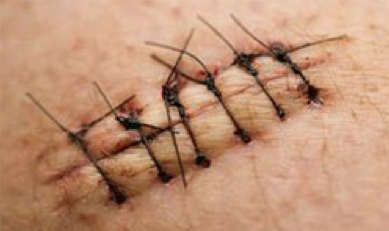It’s very common now if we hear people research and develop material to substitutes the use of polymer. We realised and aware with the impact of plastics waste, polymer start become a problem even from the start of extracting it from the resources and until the end of the day when it becomes waste in landfill. Some of the material that is possible to substitutes polymer are the material that we have known or new evolution of chemical. Here are some examples of possible material that can substitute’s plastics or polymer.
GLASS

Glass has been noted as ancient material that human have used. Centuries ago, we familiar with the main early use of glass as mass production material as a milk bottle in United Kingdom. Unlike plastic, glass is made by sand. The renewable material doesn’t contain any chemical that would possible affect anything inside (hygiene). Glass is also well-known as heatproof from microwave. This material is easy to recycle and reuse compare to polymer (plastic)
PDC or PLASTIC ADDITIVES
Prodegradant concentrates are metal compounds such as cobalt stearate or manganese stearate. This material help to break down the plastic into brittle or low molecular weight fragments. PDCs usually use in thermoplastic (type of reusable polymer) to gobble up the fragments as they disintegrate into carbon dioxide or water and biomass.
LIQUID WOOD

Liquid wood is one of new biopolymer invention. Most of biopolymer materials is faking plastic, but liquid wood are feel and act like polymer. This material biodegradable because it isn’t petroleum based plastic. Liquid wood is made out pulp based lignin. Lingin is a renewable resource from paper mills with water then expose the mixture to serious heat and pressure to create a mouldable composite material that's strong and nontoxic). In Germany they have incorporated this plastic substitute into a variety of items including toys, golf tees and even hi-fi speaker boxes.
STARCH BASED POLYMERS

As a totally biodegradable, low-cost, renewable and natural polymer, starch has been receiving lots of attention for developing sustainable materials lately. Its poor mechanical properties mean it has limited use for the sturdy products that plastic generate. To make completely biodegradable starch-based plastics, the components usually blended with starch are aliphatic polyesters, such as PLA and PCL, and polyvinyl alcohol. Adding in starch also shaves plastic manufacturing costs. Starch needs to exceed 60 percent of the composite before it has a significant effect on degradation; as the starch content increases, the polymers become more biodegradable.
CHICKEN FEATHERS

Chicken feathers are completely composed of keratin, a strong protein that give same strength and durability like plastics. It’s usually found in hair and wool, hooves and horns. Researches decided to tap into keratin’s super strong features by processing chicken feathers with methyl acrylate, a liquid found in nail polish. Ultimately, the keratin-based plastic proved to be substantially stronger and more resistant to tearing than other plastics made from agricultural sources, such as soy or starch, and scientists are clucking excitedly about chicken-feather plastic. After all, inexpensive, abundant chicken feathers are a renewable resource. Although not formally tested as of February 2012, chicken-feather plastic is expected to be fully biodegradable.
MILK PROTEIN

Casein-based plastic is actually an OLD idea, around since a French chemist treated casein with formaldehyde in the 1880s to make a substitute for ivory and tortoiseshell. However, this proved too brittle for applications beyond jewelry. Modern scientists have learned that adding silicate clay that has been frozen into a spongelike material creates a polystyrene-like material that degrades completely at the landfill and is made even less toxic by substituting a glycerine based chemical for formaldehyde.
PCL POLYESTERS

Polycaprolactone (PCL) is a synthetic aliphatic polyester that isn't made from renewable resources but does completely degrade after six weeks of composting. It's easily processed but hasn't been used in significant quantities because of manufacturing costs. However, blending PCL with cornstarch reduces cost. Biomedical devices and sutures are already made of the slow-degrading polymer, and tissue-engineering researchers dig it, too. It also has applications for food-contact products, such as trays.
PHA POLYESTERS

It’s a biodegradable closely resemble man-made polypropylene. PHA is less flexible than petroleumbased plastics, that usually found in packaging, plastic films and injection-moldedbottles. PHAs biodegrade via composting; a PHB/PHV composite (92 parts PHB/8 parts PHV, by weight) will almost completely break down within 20 days of cultivation by anaerobic digested sludge, the workhorse of biological treatment plants.
PLA POLYESTERS

Polylactic acid, or PLA, is another aliphatic polyester and one that can be made from lactic acid, which is produced via starch fermentation during corn (wheat or sugarcane) wet milling. PLA boasts the rigidity to replace polystyrene and PET, but it has an edge over the real thing: It decomposes within 47 days in an industrial composting site, won't emit toxic fumes when burned and manufacturing them uses 20 to 50 percent less fossil fuels than petroleum-based plastic. Often, companies blend PLA with starch to reduce cost and increase its biodegradability.
Theirs is no doubt that there are so many other substitutes’ material to replace plastics or polymer. The question is how much people are willing to invest and change their mindset to make that effort and save the earth that we are living right now.

